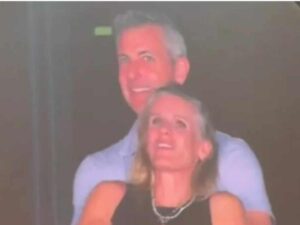Un mazzo di basilico ancora umido, il profumo che sale dal mortaio, il suono secco del pestello: la cucina si riempie di verde e di promesse. La “pasta al pesto” non è solo una ricetta, è un gesto. E quando riesce, la casa profuma d’estate anche a febbraio.
La pasta al pesto è un’icona. Semplice. Netta. Appagante. Eppure non perdona errori: un basilico stanco, un frullatore surriscaldato, un olio mediocre. Qui mettiamo a fuoco una ricetta di pesto di basilico fresca, profumata, fedele alle linee guida del Consorzio del Pesto Genovese DOP e alle buone pratiche di cucina di casa. Prima la scena, poi il punto centrale. Per ora, immagina solo una forchettata lucida, avvolgente, senza tracce d’amaro.
Ingredienti essenziali
Per 4 persone: 360 g di pasta (trofie o trenette), 50 g di foglie di basilico fresco (meglio Genovese DOP, foglia piccola), 30 g di pinoli italiani, 1 spicchio di aglio (se trovi Aglio di Vessalico, Presidio Slow Food, usalo), 50 g di Parmigiano Reggiano grattugiato, 20 g di Pecorino Sardo dolce, 80 ml di olio extravergine ligure (Riviera Ligure DOP se possibile), Sale marino grosso.
Nota ingredienti: così indicano le fonti tradizionali liguri; non ci sono dati univoci sulle percentuali “perfette”, ma queste proporzioni sono collaudate e coerenti con le ricette di riferimento.
Fin qui, nulla di inaspettato. Il centro della questione arriva ora: la freschezza del pesto non dipende solo dagli ingredienti. Il vero discriminante è il calore. Il basilico soffre l’attrito; oltre i 40 °C perde colore e aromaticità per ossidazione dei suoi terpeni principali (linalolo, eugenolo). Quindi, mortaio di marmo e pestello di legno restano l’ideale. Se usi il frullatore, raffredda lame e bicchiere, procedi a impulsi brevi e lavora sempre a temperatura bassa.
Metodo passo-passo
1) Lava velocemente il basilico in acqua fredda. Asciuga con cura. L’acqua residua diluisce la salsa al basilico e accelera l’ossidazione.
2) Nel mortaio pesta l’aglio con un pizzico di sale fino. Aggiungi i pinoli e riduci in crema.
3) Unisci il basilico a più riprese. Ruota il pestello con movimenti ampi, senza schiacciare con violenza.
4) Incorpora i formaggi. Versa l’olio a filo. Ferma quando la consistenza è cremosa ma non liscia: il pesto deve avere grana fine.
5) Se usi il frullatore: lame fredde, impulsi da 3–4 secondi, olio e formaggi alla fine. Lavora vicino a una bacinella con ghiaccio per mantenere bassa la temperatura della ciotola.
6) Cuoci la pasta in acqua ben salata: 10–12 g di sale per litro è lo standard domestico. Tradizione ligure: aggiungi a metà cottura dadini di patata e fagiolini a pezzi.
7) Scola al dente, conserva una tazza di acqua di cottura. Manteca il pesto a crudo in ciotola, allentando con poca acqua calda per emulsionare. Non scaldare il pesto in padella.
Dettagli che contano
– Il basilico migliore ha foglie piccole e tenere, raccolte la mattina.
– L’olio ligure, più delicato, non copre il bouquet erbaceo.
– Il mix di Parmigiano + Pecorino dà profondità senza salare troppo.
– Porzioni: 80–90 g di pasta a persona. Pesto: circa 20–25 g a porzione.
Conservazione: il pesto dà il meglio in giornata. In frigo, coperto da un velo d’olio, regge 1–2 giorni. Puoi congelarlo in piccole dosi; scongela in frigo. Evita il microonde.
C’è un istante preciso in cui il mortaio tace, la crema verde luccica, e capisci che hai fermato il profumo nel momento giusto. Lo riconosci dal naso, più che dagli occhi. La domanda è: vuoi seguirla alla lettera o metterci la tua firma, magari con nocciole tostate o maggiorana? La Liguria è un balcone sul mare. La tua cucina, stasera, può esserlo anche.






